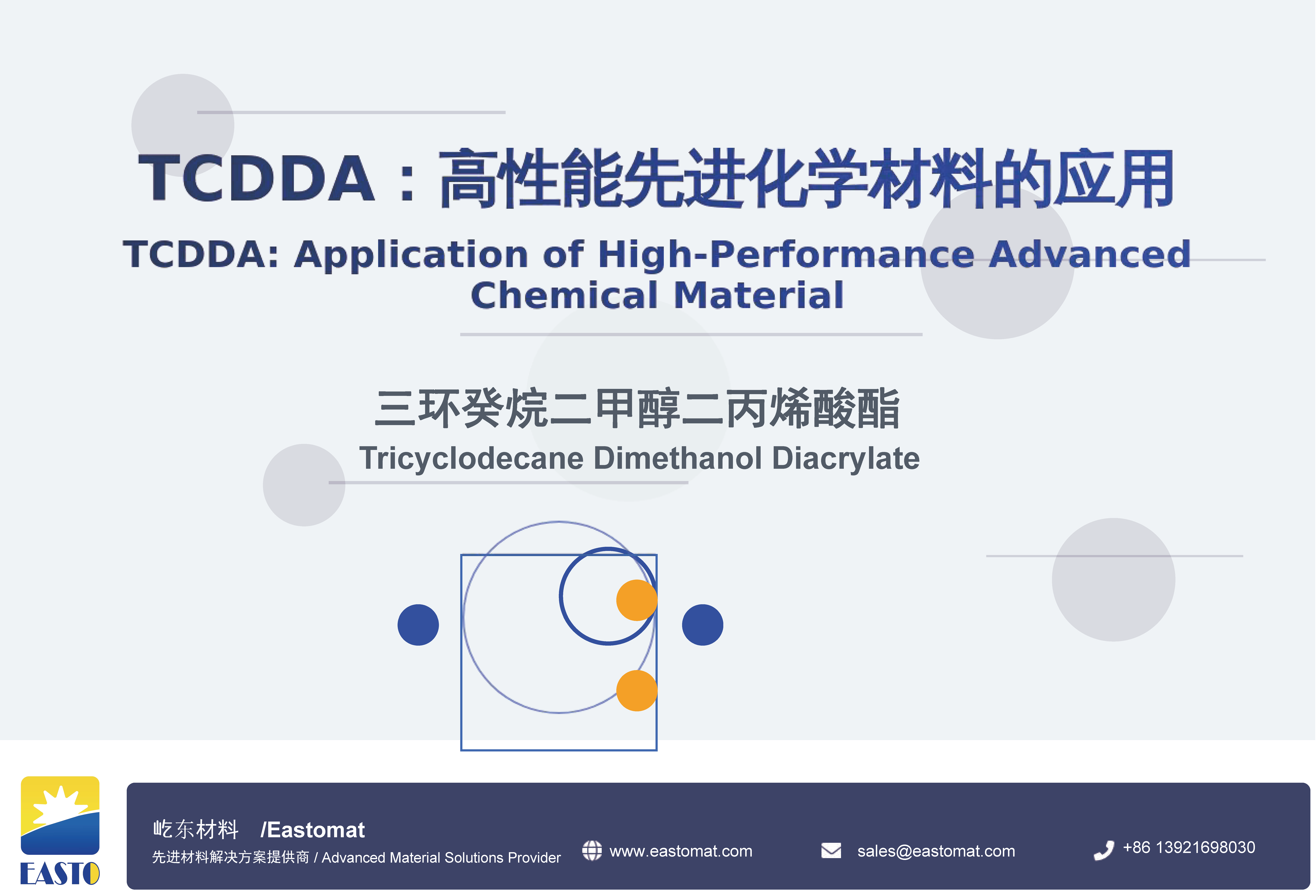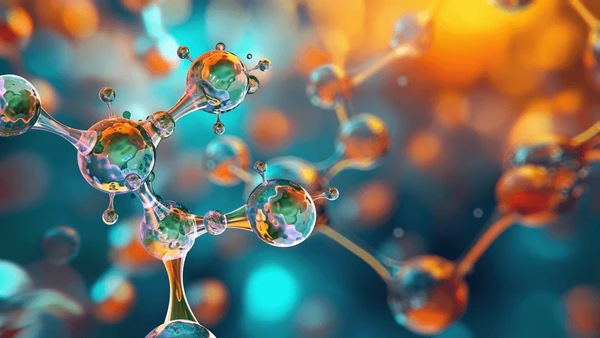The Impact of (Meth)acrylate Functionality on the Performance of UV/EB Cured Materials (Part 1)
Release time:
2025-06-09
Introduction: (Meth)acrylates and UV/EB Curing Technology – Background and Core Issues
Ultraviolet (UV) and electron beam (EB) curing technologies, with their prominent advantages of high efficiency (curing typically completed in seconds), environmental friendliness (low or no VOCs emission), and energy saving (significantly lower energy consumption compared to traditional thermal curing), have found widespread application in coatings, inks, adhesives, 3D printing, and specialty chemicals. These advanced radiation curing technologies have greatly promoted the green and high-efficiency processes in related industries.
In UV/EB curing systems, (meth)acrylate monomers and oligomers play a crucial role. They are the core reactive components in formulations; through excitation by photoinitiators or electron beams, the carbon-carbon double bonds (C=C) in their molecular structures undergo rapid free radical polymerization reactions, forming a cured product with a three-dimensional network structure. The final performance of the material largely depends on the chemical structure of these (meth)acrylates.
Among the many structural parameters influencing the performance of (meth)acrylates, "Functionality" is a core and critical factor. It directly determines how the cross-linked network is formed during curing and the physical, chemical, and mechanical properties of the material after curing. Therefore, a deep understanding of the mechanism by which functionality affects material performance is essential for optimizing formulation design, controlling product performance, and expanding the application of UV/EB curing technology.
This article aims to systematically explore how the functionality of (meth)acrylates affects various key performances of UV/EB cured materials, including curing speed, hardness, flexibility, chemical resistance, adhesion, curing shrinkage, and glass transition temperature. By analyzing these impacts, it hopes to provide valuable reference and guidance for researchers and engineers in related fields when selecting materials and designing formulations. The article will first analyze the core concept of functionality, then deeply explore its specific impact mechanisms on various properties, and through comparative analysis and application strategy discussions, strive to fully demonstrate the importance of functionality in UV/EB curing material science.
Core Concept Analysis: Functionality of (Meth)acrylates and Its Significance
The "functionality" of a (meth)acrylate refers to the number of (meth)acryloxy groups (CH2=CR-COO-, where R=H for acryloxy and R=CH3 for methacryloxy) contained in each (meth)acrylate molecule that can participate in free radical polymerization. This parameter is directly related to the cross-linking density of the polymer network after curing.
(Meth)acrylate Classification (by Functionality) According to different functionalities, (meth)acrylates can be broadly divided into the following categories:
- Monofunctional: Each molecule contains only one (meth)acryloxy group. They primarily serve as reactive diluents to adjust system viscosity, improve flexibility, or introduce specific functionalities (e.g., HEMA containing hydroxyl groups can enhance adhesion). Common examples include: Isobornyl Acrylate (IBOA), Hydroxyethyl Methacrylate (HEMA), and Lauryl Acrylate (LA).
- Difunctional: Each molecule contains two (meth)acryloxy groups. They can form linear or lightly cross-linked polymers, serving as basic units for network structures, providing a good balance between hardness and flexibility. Examples include: 1,6-Hexanediol Diacrylate (HDDA) and Tripropylene Glycol Diacrylate (TPGDA).
- Multifunctional: Each molecule contains three or more (meth)acryloxy groups. These monomers or oligomers can form highly cross-linked network structures, significantly enhancing the material's hardness, chemical resistance, and thermal stability. Examples include: Trimethylolpropane Triacrylate (TMPTA), Pentaerythritol Tri/Tetraacrylate (PETA), and numerous high-functionality polyurethane acrylates (PUA), epoxy acrylates (EA), and polyester acrylates (PEA) oligomers.
Functionality and Cross-linked Network Structure Functionality is central to understanding (meth)acrylate behavior. During UV/EB curing, the C=C double bonds of the (meth)acryloxy groups open and connect to each other, forming polymer chains. Monofunctional monomers can only extend chain length; while difunctional and multifunctional monomers can act as cross-linking points, connecting different polymer chains to form a three-dimensional cross-linked network. Theoretically, higher functionality leads to more chemical bonds formed per unit volume, denser cross-linking points, and a tighter and more regular polymer network structure. This difference in network structure is the fundamental reason for a wide range of macroscopic properties.
Subtle Differences Between (Meth)acrylates and Acrylates Typically, acrylates (R=H) have higher double bond reactivity than methacrylates (R=CH3) due to the presence of α-hydrogens, resulting in faster curing speeds. Methacrylates, due to the steric hindrance and electron-donating effect of the α-methyl group, usually form polymers with higher glass transition temperatures (Tg), better weatherability, and lower curing shrinkage. However, the influence mechanism of functionality is common to both types of compounds.
Core Analysis: Profound Impact of Functionality on Key Properties of UV/EB Cured Materials
The functionality of (meth)acrylates systematically and profoundly affects the macroscopic properties of materials by regulating the cross-linking density and network structure of the cured material.
Curing Speed
- Analysis: An increase in functionality means more polymerizable (meth)acryloyl double bonds are contained per molecule or unit mass. Under the same initiation conditions, a higher concentration of double bonds usually leads to faster polymerization kinetics, i.e., an accelerated curing speed. This is because the increased number of reactive sites facilitates chain growth and cross-linking reactions. However, at very high functionality and conversion rates, the system viscosity increases sharply, potentially reaching the gel point or glass state, leading to restricted diffusion of free radicals and unreacted monomers (i.e., gel effect or diffusion control). At this point, the curing speed may slow down, and it may even be difficult to achieve 100% theoretical conversion. For surface curing, high-functionality systems may also require special attention to their sensitivity to oxygen inhibition due to rapid free radical consumption.
- Comparison: Monofunctional monomers cure relatively slowly, while multifunctional monomers typically cure very quickly. For example, TMPTA (trifunctional) cures much faster than IBOA (monofunctional).
Coating/Material Hardness and Abrasion Resistance
- Analysis: Hardness and abrasion resistance are closely related to the material's ability to resist deformation and surface damage. Increased functionality leads to a significant increase in cross-linking density, forming a more rigid network where the mobility of molecular segments is greatly restricted. This highly cross-linked structure makes the material more difficult to plastically deform and be scratched by external forces, thus exhibiting higher hardness (e.g., pencil hardness, Shore hardness) and superior abrasion resistance.
- Comparison: Low-functionality (meth)acrylates typically cure into softer materials, such as some monofunctional acrylates used as plasticizers; while high-functionality ones like PETA or high-functionality polyurethane acrylates can impart extremely high surface hardness and scratch resistance to coatings.
Flexibility/Elongation and Impact Resistance
- Analysis: Flexibility, elongation at break, and impact resistance are important indicators of material toughness. Contrary to the trend of hardness, as functionality increases, cross-linking density increases, and the polymer network becomes more rigid and dense. The available space for molecular segment movement decreases, leading to a significant reduction in the material's flexibility, elongation at break, and ability to withstand impact deformation. High-functionality systems often cure to a brittle texture. It is worth noting that the chemical structure of the (meth)acrylate backbone (e.g., introduction of flexible polyether, polyester, or polyurethane long chains) also has a huge impact on flexibility and can sometimes be partially decoupled or synergistically controlled with the functionality effect.
- Comparison: Monofunctional or low-functionality long-chain aliphatic (meth)acrylates (e.g., lauryl acrylate, or certain mono/difunctional polyurethane acrylates) typically provide excellent flexibility. In contrast, high-functionality monomers like TMPTA and PETA cure to be very hard and brittle, with extremely low elongation.
Chemical Resistance and Solvent Resistance
- Analysis: The chemical and solvent resistance of a material depends on its ability to resist chemical attack and solvent swelling/dissolution. Increased functionality leads to a denser cross-linked network and reduced free volume between molecular segments. This tight network structure can more effectively hinder the penetration, diffusion, and swelling of chemical and solvent molecules, thereby significantly improving the material's chemical and solvent resistance.
- Comparison: Highly cross-linked coatings formed from multifunctional (meth)acrylates (e.g., epoxy acrylate and high-functionality polyester acrylate systems) typically exhibit excellent resistance to chemical media such as acids, alkalis, and organic solvents, while materials with low cross-linking density are relatively susceptible to erosion.
Adhesion to Substrate
- Analysis: Adhesion is a complex property influenced by multiple factors. The impact of functionality on adhesion is not unidirectional:
- Wetting: Low-functionality monomers typically have smaller molecular weights, lower viscosity, and good flowability, which is conducive to wetting the substrate surface, a prerequisite for good physical adsorption.
- Curing Shrinkage: High-functionality monomers/oligomers typically undergo greater volumetric shrinkage during curing due to the large conversion of double bonds. This shrinkage can generate internal stress at the coating/material-substrate interface, potentially weakening or even destroying adhesion.
- Chemical Interaction: If the (meth)acrylate molecular structure contains groups that can form chemical bonds or strong physical interactions (e.g., hydrogen bonds) with the substrate (e.g., hydroxyl, carboxyl, urethane bonds), their contribution to adhesion may outweigh the influence of functionality itself.
- Therefore, achieving good adhesion often requires a delicate balance between wetting, curing shrinkage, and interfacial chemical interactions. Sometimes, adding appropriate amounts of low-functionality monomers or oligomers with specific adhesion-promoting groups is a common strategy to improve the adhesion of high-functionality systems.
- Wetting: Low-functionality monomers typically have smaller molecular weights, lower viscosity, and good flowability, which is conducive to wetting the substrate surface, a prerequisite for good physical adsorption.
Curing Shrinkage
- Analysis: (Meth)acrylates undergo volumetric shrinkage during the transition from liquid monomers/oligomers to solid cross-linked polymers. This is because van der Waals distances are replaced by covalent bond distances, leading to tighter molecular packing. The higher the functionality of the (meth)acrylate, the greater the number of reactive double bonds contained per unit volume, and the higher the density of functional groups participating in the polymerization reaction. Therefore, the volumetric change (i.e., curing shrinkage) occurring during the liquid-to-solid phase transition is also greater. High curing shrinkage is a common problem in UV/EB curing systems, easily leading to internal stress concentration, material warping, cracking, reduced adhesion, and difficulties in controlling dimensional accuracy.
- Comparison: Monofunctional (meth)acrylates have relatively low curing shrinkage, while high-functionality monomers like TMPTA can have shrinkage rates of over 10-12% (even up to 15%+). The development of low-shrinkage or zero-shrinkage (meth)acrylates is an important research direction in this field.
Glass Transition Temperature (Tg)
- Analysis: The glass transition temperature (Tg) is the temperature at which an amorphous polymer transitions from a glassy state (hard and brittle) to a rubbery state (flexible). An increase in functionality leads to an increase in cross-linking density, and the movement of molecular segments becomes more severely constrained. Overcoming these constraints to allow chain segments to begin cooperative motion (i.e., glass transition) requires higher energy, so the material's Tg increases with increasing functionality. A high Tg generally means that the material can maintain its rigidity and mechanical properties at higher temperatures, i.e., it has better heat resistance.
- Comparison: Materials cured from low-functionality (meth)acrylates (especially those with flexible long chains) have lower Tg, possibly below room temperature. In contrast, high-functionality systems, such as certain epoxy acrylates or highly cross-linked aromatic (meth)acrylates, can have a Tg well above 80℃ (even up to 150℃+).
Key Takeaways from Core Analysis
- Increased functionality generally leads to: faster curing speed, increased hardness, enhanced abrasion resistance, improved chemical resistance, increased curing shrinkage, and higher Tg.
- Increased functionality generally leads to: decreased flexibility, reduced elongation, and weakened impact resistance.
- Adhesion to the substrate is complexly affected by functionality, requiring comprehensive consideration of wetting, shrinkage, and chemical interactions.
Functionality,acrylate,methacrylate
Next Page
Latest News
Get a Free Consultancy
NANTONG EASTO MATERIALS TECHNOLOGY CO.,LTD.

No.118,Zhujiang Rd.,Juegang St.,Rudong County,
Nantong City,Jiangsu Province,226400,China




 2025-06-11
2025-06-11






